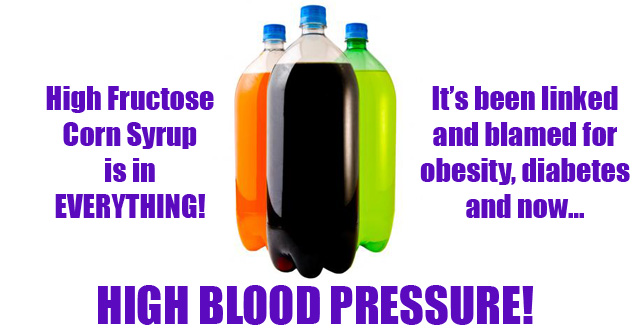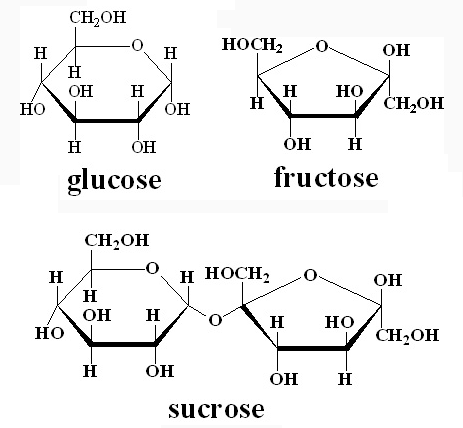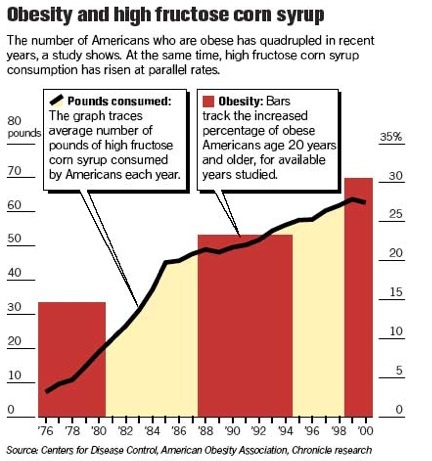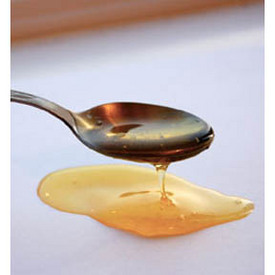
realtests -
realtests asvab
test-inside -
http://www.test-inside.com/test/practice-asvab.htm
examsheets -
http://www.examsheets.com/certification/A-plus.htm
braindumps -
http://www.braindumps.com/testprep/lsat-practice-questions.htm
selftestengine -
http://www.selftestengine.com/test/cdl-test.html
 High Fructose Corn Syrup: A Recipe For Hypertension, Study Finds
As reported in ScienceDaily, a diet high in fructose increases the risk of developing high blood pressure (hypertension), according to a paper being presented at the American Society of Nephrology's 42nd Annual Meeting and Scientific Exposition in San Diego, California. The findings suggest that cutting back on processed foods and beverages that contain high fructose corn syrup (HFCS) may help prevent hypertension.
Diana Jalal, MD (University of Colorado Denver Health Sciences Center), and her colleagues studied the issue in a large representative population of US adults. They examined 4,528 adults 18 years of age or older with no prior history of hypertension. Fructose intake was calculated based on a dietary questionnaire, and foods such as fruit juices, soft drinks, bakery products, and candy were included.
Dr. Jalal's team found that people who ate or drank more than 74 grams per day of fructose (2.5 sugary soft drinks per day) increased their risk of developing hypertension. Specifically, a diet of more than 74 grams per day of fructose led to a 28%, 36%, and 87% higher risk for blood pressure levels of 135/85, 140/90, and 160/100 mmHg, respectively. (A normal blood pressure reading is below 120/80 mmHg.)
Facts You Need To Know
High fructose corn syrup (HFCS) is a liquid sweetener used in the manufacture of foods and beverages. It's in everything. Just grab almost anything sweet in your kitchen and read the label. Some people think it causes obesity and diabetes.
HFCS is not natural. It's manufactured from cornstarch, using a process developed in Japan in 1971. HFCS is made up of glucose and frucose molecules, unlinked. The most common form in the American food supply is HFCS-55, which contains 55% fructose and 45% glucose. Believe me, it's in everything.
By comparison, ordinary sugar (sucrose) contains 50% fructose and 50% glucose. HFCS-55 and sucrose have similar sweetness intensity. They are almost the same (a 5% ratio difference).
Despite the similarity, there is growing evidence that High Fructose Corn Syryp can disrupt the body's metabolism and bring about a syndrome called "insulin resistance" and type 2 diabetes.
Insulin resistance is a condition in which the body does not effectively use the insulin it produces. The body compensates by producing greater amounts of insulin in order to maintain normal blood glucose levels. Insulin resistance -- along with obesity, hypertension, and blood lipid disorders -- is part of the metabolic syndrome. Insulin resistance sometimes leads to type II diabetes and heart disease.
High fructose corn syrup has been linked in many clinical trials to the obesity epidemic in the U.S. as well as many other western countries
Although many factors contribute to the obesity epidemic in the United States, no other culprit has been as highly criticized as high fructose corn syrup (HFCS).
In fact, high fructose corn syrup has been linked in many clinical trials to the obesity epidemic in the U.S. as well as many other western countries. The Corn Refiners Association has fought back against those claims by insisting that HFCS is no worse for the body than regular sugar.
However, part of what makes HFCS such an unhealthy additive to any diet is that it is metabolized into fat in the body far faster than any other type of sugar.
Since most high fructose corn syrup is consumed in liquid form (often in sugary sodas), its negative metabolic effects are significantly increased. The effects often result in diabetes, obesity, metabolic syndrome, an increase in triglycerides and LDL (bad) cholesterol levels, and liver disease.
HFCS contains no enzymes, vitamins or minerals, and sucks all available micronutrients from the body. Unbound fructose, found largely in HFCS, interferes with the heart’s use of minerals including magnesium, copper and chromium.
Bottom line: Stay away from high fructose corn syrup and the dangers that will inevitably follow.
So, what's so different about HFCS?
Natural sources of fructose include fruits, some vegetables, honey, sugar cane and sugar beets. In a normal diet, fructose would only be ingested in these natural forms. It would remain a relatively low source of sugar. Today, the inclusion of fructose in virtually every food product dramatically increases the proportion of fructose in our diet. Some researchers have suspected that the health problems linked to HFCS stems from the unusually high consumption of fructose, the main ingredient in HFCS.
For many years, Dr. Meira Fields and her coworkers at the US Department of Agriculture investigated the harmful effects of dietary sugar on rats. They discovered that when male rats are fed a diet deficient in copper, with sucrose as the carbohydrate, they develop severe pathologies of vital organs. Liver, heart and testes exhibit extreme swelling, while the pancreas atrophies, invariably leading to death of the rats before maturity.
Sucrose is a disaccharide composed of 50 percent glucose and 50 percent fructose. Dr. Fields repeated her experiments to determine whether it was the glucose or fructose moiety that caused the harmful effects. Starch breaks down into glucose when digested. On a copper-deficient diet, the male rats showed some signs of copper deficiency, but not the gross abnormalities of vital organs that occur in rats on the sucrose diet. When the rats were fed fructose, the fatal organ abnormalities occured.
While naturally occurring sugars, as well as sucrose, contain fructose bound to other sugars, high fructose corn syrup contains a good deal of "free" or unbound fructose. Research indicates that this free fructose interferes with the heart's use of key minerals like magnesium, copper and chromium. Among other consequences, HFCS has been implicated in elevated blood cholesterol levels and the creation of blood clots. It has been found to inhibit the action of white blood cells so that they are unable to defend the body against harmful foreign invaders.
Lysl oxidase is a copper-dependent enzyme that participates in the formation of collagen and elastin. Fructose seems to interfere with copper metabolism to such an extent that collagen and elastin cannot form in growing animals--hence the hypertrophy of the heart and liver in young males. The females did not develop these abnormalities, but they resorbed their litters. In studies with rats, fructose consistently produces higher kidney calcium concentrations than glucose. Fructose generally induces greater urinary concentrations of phosphorus and magnesium and lowered urinary pH compared with glucose.
In humans, fructose feeding leads to mineral losses, especially higher fecal excretions of iron and magnesium, than did subjects fed sucrose. Iron, magnesium, calcium, and zinc balances tended to be more negative during the fructose-feeding period as compared to balances during the sucrose-feeding period. According to a recent article in the American Journal for Clinical Nutrition, high fructose corn syrup (HFCS) is the possible culprit for the obesity epidemic in America. HFCS, which has been linked to diseases such as obesity, type 2 diabetes, cardiovascular disease and breast cancer among others, is a prevalent ingredient in foods and beverages through-out the country.
The average American consumes about 28.4 kg (62.48 pounds) of HFCS annually, versus 26.7 kg (58.74 pounds) of sucrose sugar. Surprisingly many other countries have quite a sweet tooth! Sucrose consumption per person is higher than the USA in the following examples (note also the diabetes rates):
* USA: 26.7 kg, 58.74 lbs. -- diabetes rate 7.8%
American Indians hit hard with diabetes
According to government health officials, not only do the American Indian and Alaska Native populations suffer have the highest diabetes rates among ethnic groups, but the disease is increasing in the young American Indian population.
A program that has established diabetes prevention and treatment programs in Indian country is set to expire next year.
A possible hint at culture or diet as a factor can be seen in the statistics for culturally diverse New York City. According to the city's health commisioner, Dr. Yhomas R. Frieden, in the city 12.2 percent of Hispanics have diabetes, as do 10.8 percent of non-Hispanic blacks. Whites who are not Hispanic have the lowest rate -- 5 percent -- and Asians are second to last, with 6.8 percent. The Bronx leads the city in diabetics, with 11.5 percent of residents having the illness, while 4.6 percent of Staten Island residents have it.
Even though commonly consumed sugars provide basically the same number of calories, they are metabolized and used by the body in different ways. For instance, glucose from dietary sources is digested, absorbed, transported to the liver, and released into the general blood stream. Many tissues take up glucose from the blood to use for energy; this process requires insulin. Fructose is predominantly metabolized in the liver, but unlike glucose it does not require insulin to be used by the body.
According to the Unternational Food Information Council, "There is no scientific proof of cause and effect with respect to the consumption of HFCS rather than other sugars, such as sucrose, regarding obesity rates. Some studies suggest we are consuming more calories, but the imbalance of calories consumed and expended is what has caused the weight increase -- we consume more calories than we need." Is this true? Are we just all lustful eaters and layabouts? Or is something else at work here...
Messing with nature?
HFCS is a useful ingredient because of its sweet and saves the food producers money. Real sugar is very expensive because of sugar tariffs and import quotas. Even with all the chemistry and processing, HFCS is still the cheapest way to sweeten food. It's also said to extend the shelf-life of products and easier to mix because it's a liquid. Over the past 20 years, as methods for producing HFCS improved, food and beverage companies have all replaced other sweeteners with HFCS.
Fructose is a simple sugar, unique in that it does not require the body to make insulin in order to use the sugar as fuel. Ingesting fructose does produce that "sugar rush" when the body is pumping insulin to the bloodstream. This bodily sensation is often connected with your feeling of "satisfaction" or "fullness." After ingesting fructose you may not feel satisfied -- even though your caloric intake is the same as sucrose. In theory this could cause you to consume more.
A look at the growing obese population in countries where HFCS is in "everything" seems to indicate that it does just that.
| |
 Over the last 200 years, the rate of fructose intake has directly paralleled the increasing rate of obesity, which has increased sharply in the last 20 years since the introduction of HFCS. Today, Americans consume 30% more fructose than 20 years ago and up to four times more than 100 years ago, when obesity rates were less than 5%. While this increase mirrors the dramatic rise in the prevalence of hypertension, studies have been inconsistent in linking excess fructose in the diet to hypertension.
Over the last 200 years, the rate of fructose intake has directly paralleled the increasing rate of obesity, which has increased sharply in the last 20 years since the introduction of HFCS. Today, Americans consume 30% more fructose than 20 years ago and up to four times more than 100 years ago, when obesity rates were less than 5%. While this increase mirrors the dramatic rise in the prevalence of hypertension, studies have been inconsistent in linking excess fructose in the diet to hypertension.
 American consumes nearly 70 lb (32 kg) of HFCS a year, marking HFCS as a major contributor to the rising rates of obesity in the last generation.
American consumes nearly 70 lb (32 kg) of HFCS a year, marking HFCS as a major contributor to the rising rates of obesity in the last generation. Pure fructose contains no enzymes, vitamins or minerals and robs the body of its micronutrient treasures in order to assimilate itself for physiological use.
Pure fructose contains no enzymes, vitamins or minerals and robs the body of its micronutrient treasures in order to assimilate itself for physiological use. "In some communities, the prevalence rate is as high as 60 percent among adults," Charles Grim, the head of the Indian Health Service, told the Senate Indian Affairs Committee.
Diabetes increased 128 percent among teens ages 15 to 19 between 1990 and 2004. The disease increased 77 percent among young people younger than 15 during the same time frame.
"In some communities, the prevalence rate is as high as 60 percent among adults," Charles Grim, the head of the Indian Health Service, told the Senate Indian Affairs Committee.
Diabetes increased 128 percent among teens ages 15 to 19 between 1990 and 2004. The disease increased 77 percent among young people younger than 15 during the same time frame.